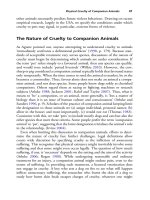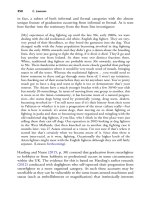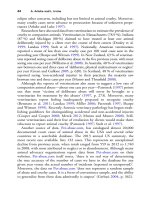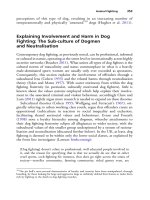The palgrave international handbook of a 197
Bạn đang xem bản rút gọn của tài liệu. Xem và tải ngay bản đầy đủ của tài liệu tại đây (45.58 KB, 1 trang )
190
N. Taylor and H. Fraser
animals, is often difficult. Coupled with the fact that human–animal studies
is still a relatively recent development, this might explain why there are so
few empirical studies of slaughterhouses that attempt to centralise the experience of the animals.
Developing Knowledge from Ethnographies
of the Slaughterhouse
Ethnography can also be used to expose slaughterhouse abuse perpetrated
against animals, including acts that abide by slaughterhouse processing
protocols. In other words, it is not simply a question of ensuring slaughterhouse workers do not enact unusually cruel behaviours but of questioning
the legitimacy of the very nature of their work. Ethnographies can help bring
to the surface some of the finer details of abuse. With other forms of publicly
exposing otherwise hidden and normalised issues, including a variety methods of video-based activism, these documents can help integrate reasons with
emotions for a more holistic witnessing to violence. This is important
because humans can hide behind technologies, from factory farming and
mass human genocide.
In Working undercover in a Slaughterhouse, (Soloman 2012) Timothy
Pachirat explains what he hoped to learn by becoming a meat processer in
a North American slaughterhouse,
Pachirat: I wanted to understand how massive processes of violence
become normalized in modern society, and I wanted to do so from the
perspective of those who work in the slaughterhouse. My hunch was that
close attention to how the work of industrialized killing is performed might
illuminate not only how the realities of industrialized animal slaughter are
made tolerable, but also the way distance and concealment operate in
analogous social processes: war executed by volunteer armies; the subcontracting of organized terror to mercenaries; and the violence underlying the
manufacturing of thousands of items and components we make contact
with in our everyday lives.
Rather than ethics of use, an emphasis may also be placed on training people
in the efficient use of the chosen machine, such as how to best use a gas
chamber, or in the case of ‘meat processing’, a bolt gun, a hock cutter or a
hide puller.









